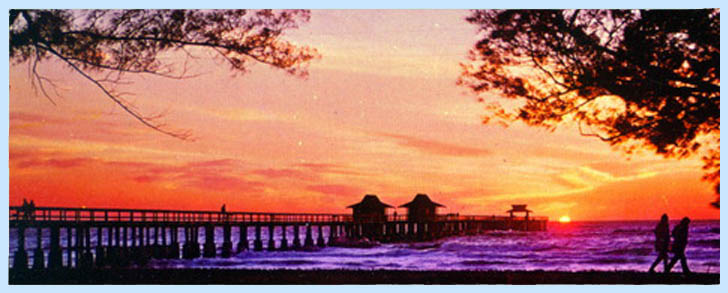Naples Florida History
Barefoot Williams
By Bonnie Jean Cousineau, Naples Historical Society Docent
As residents and visitors are aware, many of the highways and byways in this area are named for the movers and shakers who contributed to the development of Naples -- Collier Boulevard, Goodlett-Frank Road and Crayton Cove are just three among many. There is another, perhaps less well-known and certainly less well-traveled road in east Naples that is a named for John Archie Williams, otherwise known as "Barefoot Williams." According to Dr. Earl Baum, who knew Williams, "the road that bears his name has great historical significance...for it was part of the first road to the old single-car Marco Island ferry which first went into operation about 1912." It was also the road where Barefoot Williams lived, hunted and fished. Collier County Museum archives record that "he was typical of the tough pioneers of Collier County" and was, by all accounts, a beloved figure in these parts.
John Archie Williams was born on a farm in Sanalac, Michigan in 1883, and, when a young man, worked as a streetcar conductor in Flint. He married Jane Wittenmeyer and they had six living children by the time he moved his family to Detroit, where he worked for the Street Railway Company, did some factory work, and also drove a truck for a moving company. Betsy Perdichizzi, of the Marco Island Historical Society, had the opportunity in 2004 to interview one of Williams' granddaughters and learned that John (later Barefoot) took on the task of moving a family's furniture to Florida, a task that would earn some money and at the same time provide a vacation in the sunshine for his family, away from the cold winds of Michigan. After some roadside adventures, including sleeping on a grave in a cemetery, and a frightened daughter, Margarete, running away (she was found and brought back), they arrived in Florida and never left. As Perdichizzi aptly puts it, "They came to Florida on a vacation in 1919 and never went back again."
The family first lived in Thonotosassa, where Williams became known as the "Ford Doctor," fixing up Model T's for his neighbors. Later relocating to Fort Myers, he established a fish camp at Fisherman's Key and also opened the Eatmore Fish Market." It was at this point that John Archie Williams acquired his nickname. According to his granddaughter, he didn't like having fish slime accumulate on his shoes so he took to going barefoot, a habit he continued for the rest of his life, save for the last two years when diabetes obliged him to keep his feet covered. "By the time he moved to Henderson Creek," says Baum, "the nickname had become so well established that few people could tell you his real name." Williams also became an oysterman, establishing Barefoot Williams' Oyster House on Henderson Creek, located in the area now occupied by the KOA campground. Oysters were sold for $6.00 a gallon for "clean" (shucked) oysters and $2.00 a bushel for "unclean" oysters. Such bounty for such a modest price! Unfortunately, oysters are no longer found anywhere in this area, victim to overharvesting, pollution, and, says Baum, "the encroachment of civilization." By the late 1950's, Williams was obliged to get his oysters from Pine Island.
The enterprising Williams did not confine his endeavors to fishing. At one point he raised honeybees and also collected live snakes for herpetologists and zoos. He was a great story teller, and eventually established himself as a "living legend" in Naples.
The remnants of Williams' shack and the Marco ferry bridge, both ruined by Hurricane Donna in 1960, are still in existence. "Barefoot William was a fascinating character," declares Jose Lombillo of the Naples Historical Society, and, judging from observations made by the many people who knew him, he was indeed. He died in 1962, leaving behind 46 grandchildren and 50 great-grandchildren. The road that bears his name is still there, although not, regrettably, with the two painted barefoot marks that so effectively conjured his image to those who passed by.
The Palm Cottage house museum is open for tours. Visitors and community members alike can learn about Barefoot Williams and many other notable Naples leaders and characters with a docent-guided tour. Call the Naples Historical Society for more information: 239-261-8164.
|

